Insulation Basics: Heat, R-Value and the Building Envelope
http://decor-ideas.org 06/02/2014 20:05 Decor Ideas
Adding insulation to your home’s building envelope (the walls, slab and roof that protect your home from the outside) can be one of the most cost-efficient ways to reduce your heating and cooling bills. In new construction, investing in the insulation is a smart way to reduce future maintenance costs by reducing the home’s energy consumption.
However, because no two buildings are the same, and because there are so many ways to insulate, it can often be confusing to determine what’s best for a particular project.
Over the next few weeks, we’ll look at various types of thermal insulation and cover the pros and cons of each. Before we get started, it’s essential to understand the basics of heat flow and how insulation factors in.
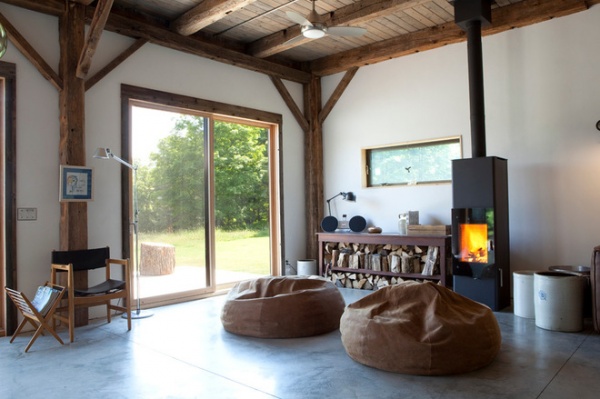
Heat is always on the move. Heat will always find a way to flow toward colder areas until the two are neutralized. It moves in three different ways:
Conduction. For example, when an uninsulated slab on the ground allows the heat in your home to transfer to the ground.Convection. Heat rises, making your attic hotter than your basement.Radiation. Underfloor radiant heating, such as in the home seen hereIf enough heat flows toward the cool area, your interior can become uncomfortable.
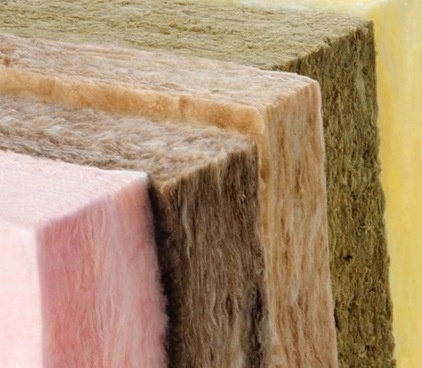
To keep heat from flowing through a building envelope, conductive resistance can be introduced in the form of insulation. In the winter this insulation helps to reduce heat loss by making it more difficult for heat to flow toward the cold outdoors. In the summer it helps keep the heat out of your cool interior environment.
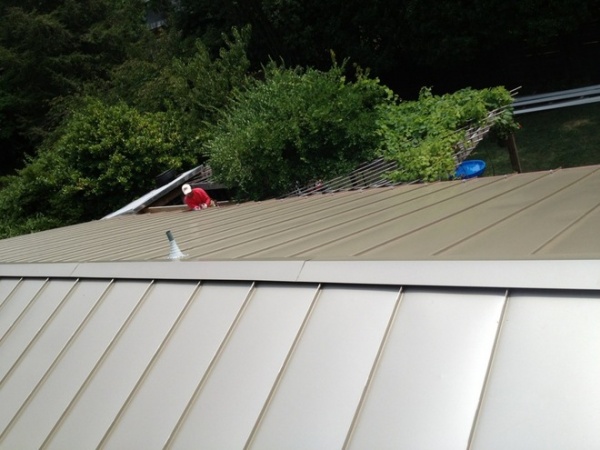
There are other ways to help prevent heat flow, such as radiant barriers that reflect the heat away from the building envelope. Pictured here is a ventilated metal roof over a system that includes a radiant barrier. This ventilation strip along the ridge of the roof is important for releasing the reflected heat from the space underneath. Often a system like this will be used in combination with a well-insulated building envelope to help curb summer heat from invading the home and sending air conditioning bills through the roof.

The higher the R-value, the better the thermal resistance. You may have heard the term “R-value” when discussing thermal insulation. Here in Europe, we more often talk about the U-value (the inverse of the R-value) or the lambda value of a material. Lambda and U-values work the opposite way, with lower values representing higher performance.
All of these values are meant to help you understand the thermal resistance of a certain material or combination of materials to conductive heat flow. In the U.S., it’s actually legally required to provide the R-value of certain building materials at the point of sale (and sometimes in the advertisement).The intention of this law is to increase consumer awareness and prevent false claims about the potential of insulation components. However, the R-value itself can be tricky to understand.
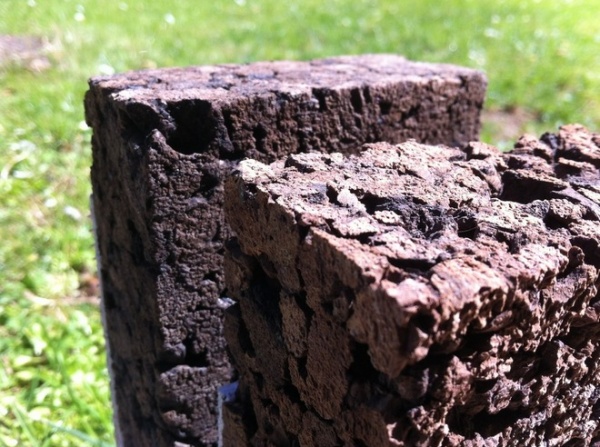
R-values use different units of measurement in the U.S. versus the rest of the world. And they can easily be confusing, because the units are typically left off. Internationally, R-values are in watts per meters squared kelvin (m²K/W), whereas in the U.S. they are given in units of feet squared times degrees Fahrenheit times hours, divided by BTU (British thermal unit), or ft² °F hr/BTU. (Now do you see why they leave the units off?)
Sometimes Americans refer to the international system as RSI to differentiate. This can be important when you are researching products online, so keep it in mind. And be sure to know which system your product is referencing, especially when it comes to imported materials like expanded cork from the Mediterranean (seen here).
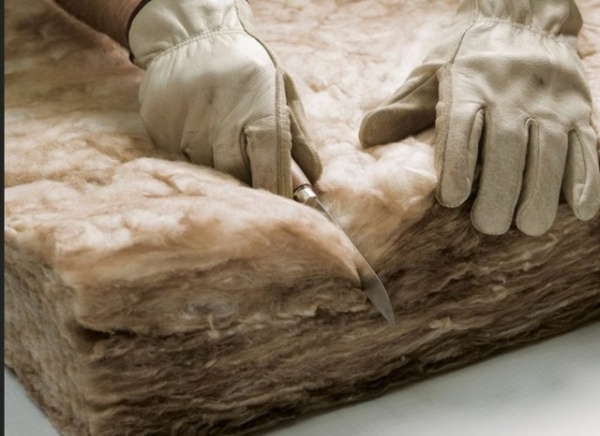
The R-value can change in a material due to varying thickness. You may have heard your architect say that the goal is to reach a certain R-value for the wall section, for example. This means the thermal resistance of the entire series of products that make up the wall section — all of them together — plus the internal and external layers of air surrounding the wall. When you purchase insulation, you should have access to a fact sheet telling you exactly what the R-value per inch is, with a table showing any change in the R-value over varying thicknesses of the material.
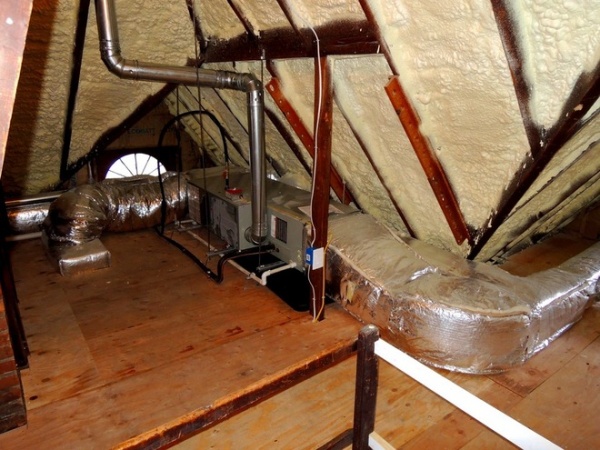
Thermal insulation is only one part of the puzzle. But it’s a pretty big one. It may help to try to imagine your home like a balloon full of hot water; the balloon is the building envelope. You can feel the heat trying to escape through the material (this is conductive heat loss). If you wrap the balloon in a towel, it may take longer for the water inside the balloon to lose all of its heat. But if there’s a hole in the balloon, all of that hot water will leak out at a much faster rate.
A home’s envelope is similar. You can add insulation to the roof or attic, the walls and the slabs, but if you have an air infiltration around your window frames (a very common problem in many homes), the effectiveness of that insulation that you added will be somewhat negated because all of the heat will just go out the window frame.
This is why the installation of your insulation is perhaps even more important than the material you select. In fact, ease of installation is one of the major reasons that spray foam insulation (seen here) is so popular in the United States.
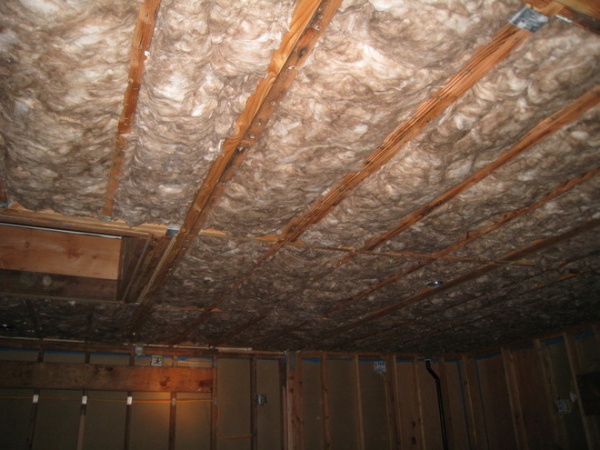
The amount of insulation you will need and its R-value will be dependent on many factors, including:
Your climate
Your type of heating and cooling system
Your budgetWhether you are installing the material yourself or having a professional do itWhat part of the house you’re insulatingThe importance of indoor air quality to you and your familyLife-cycle cost considerationsRecycled content and embodied energy of the material
A home’s building envelope is only as strong as its weakest link. Keep this in mind when investing in insulation. It may not make financial sense to improve the quality of your balloon if it has a hole in it anyway.
See more on mechanical ventilation
Finally, there are a few other factors to consider when shopping around for insulation. The heat capacity of a material can have a big impact on its performance in the summer or in hot climates. Also, the density and the transpiration of a product may be important factors to consider. I’ll tackle these in more detail in future ideabooks about insulation materials.
More common-sense ways to save energy at home
Related Articles Recommended












